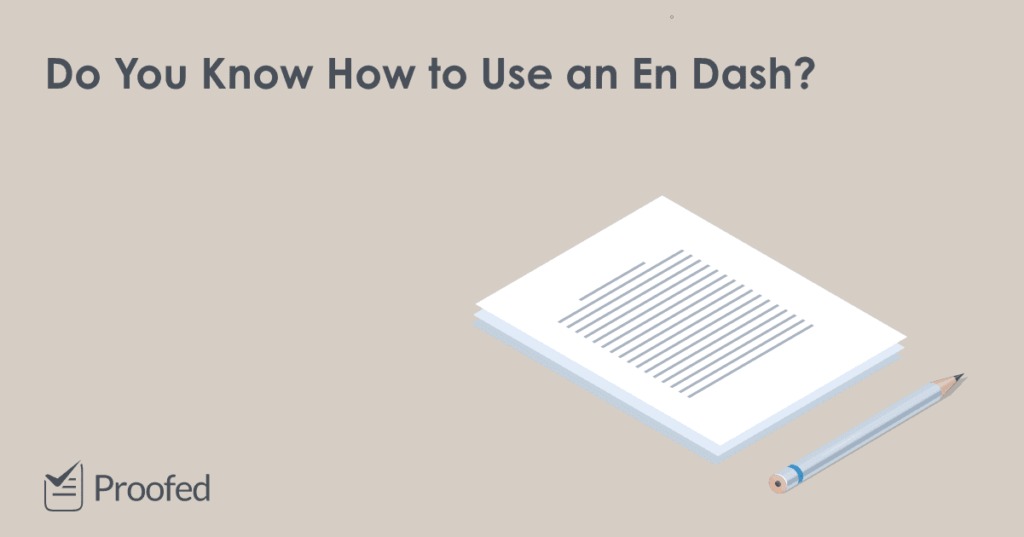Ever wondered what en dashes are or how to use them in your writing? In this post, we explain everything you need to know about the en dash.
What Is an En Dash?
An en dash (–) is a punctuation mark. It is longer than a hyphen (-) and shorter than an em dash (—). You’d be forgiven for confusing these three marks, but they differ in length and what they’re used for.

Let’s look at the different uses for en dashes.
Spans of Numbers
We can use en dashes to show a span or range of numbers:
The years 1983–1990 saw several policy changes.
Students aged 12–16 can enter the national poetry competition.
If you introduce a range with the word “from,” you should use the word “to” instead of an en dash to keep the construction parallel. Likewise, if you use “between” to introduce a range, you should use “and” in place of an en dash:
We lived there from 2001 to 2005. ✓
Between 1890 and 1920, he worked in a mill. ✓
We lived there from 2001–2005. ✗
Between 1890–1920, he worked in a mill. ✗
Scores
We can also use an en dash to show scores or the results of contests:
It was a close game between Brazil and France, ending 4–3.
Find this useful?
Subscribe to our newsletter and get writing tips from our editors straight to your inbox.
Conflict and Connection
En dashes can also indicate a conflict or connection between two things:
The China–US trade war has escalated in recent years.
Trust is fundamental in the doctor–patient relationship.
Some people use a forward slash similarly (e.g., doctor/patient relationship). But since a slash also means “or” (e.g., Dear Sir/Madam = Dear Sir or Madam), you should stick to en dashes to show a relationship.
Compound Adjectives
When forming compound adjectives, an en dash can be used instead of a hyphen if the compound adjective contains another open or hyphenated compound. This makes it clear that all words in the adjective are connected:
That antique shop sells some pre–World War II maps of Europe.
She had a Mother Theresa–like commitment to helping others.
Parenthetical Statements
En dashes can be used like brackets to set part of sentence apart from the surrounding text. When you use en dashes in this way, you will usually want to add a space on either side of each en dash:
He didn’t eat vegetables – not even potatoes – and wasn’t about to start.
In American English, we tend to use em dashes instead for this purpose. If you are using a style guide, then, make sure to check which type of dash it suggests using for parenthetical statements.
Proofreading for Punctuation
Using punctuation correctly in your writing is important for clarity and readability. And if you’d like a little extra help to avoid punctuation mistakes, our proofreaders are available 24/7!



